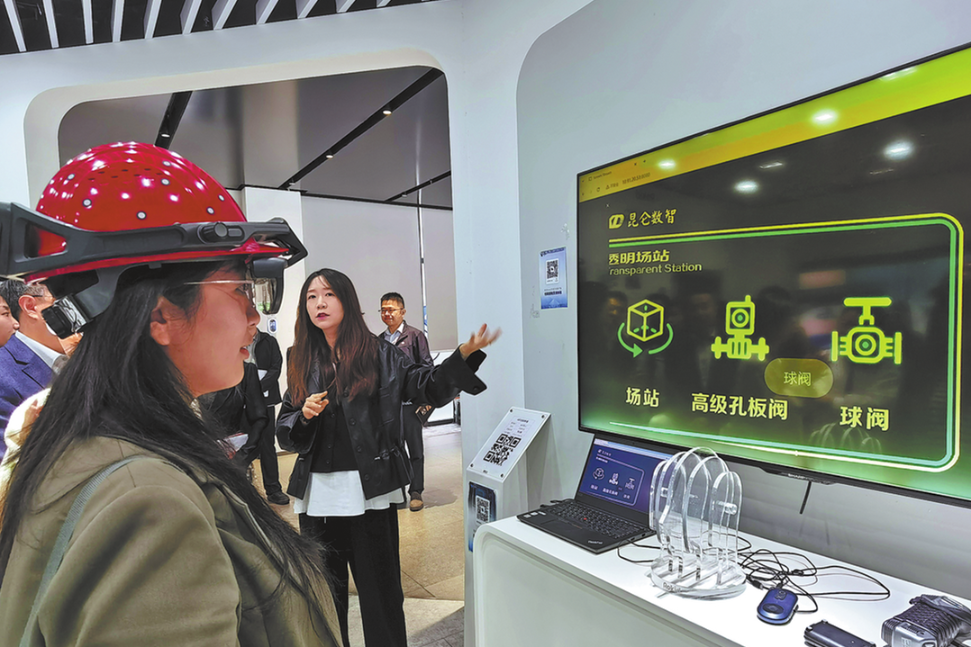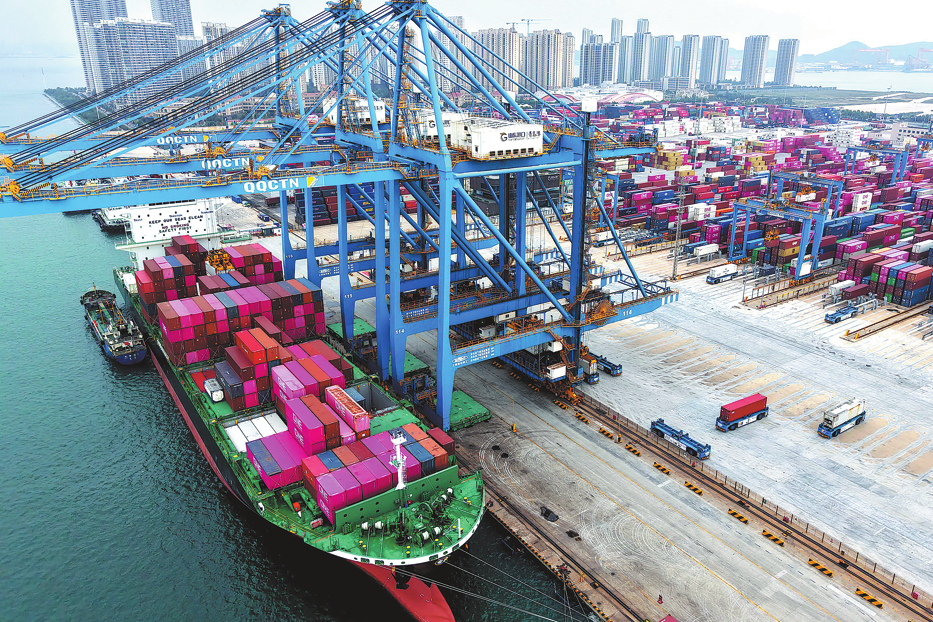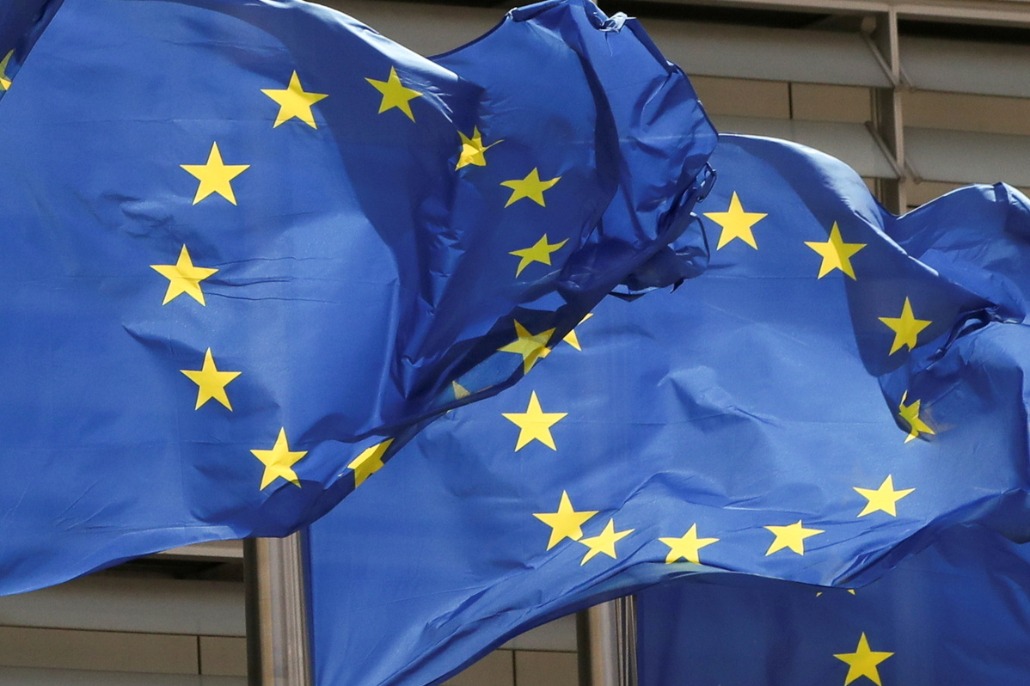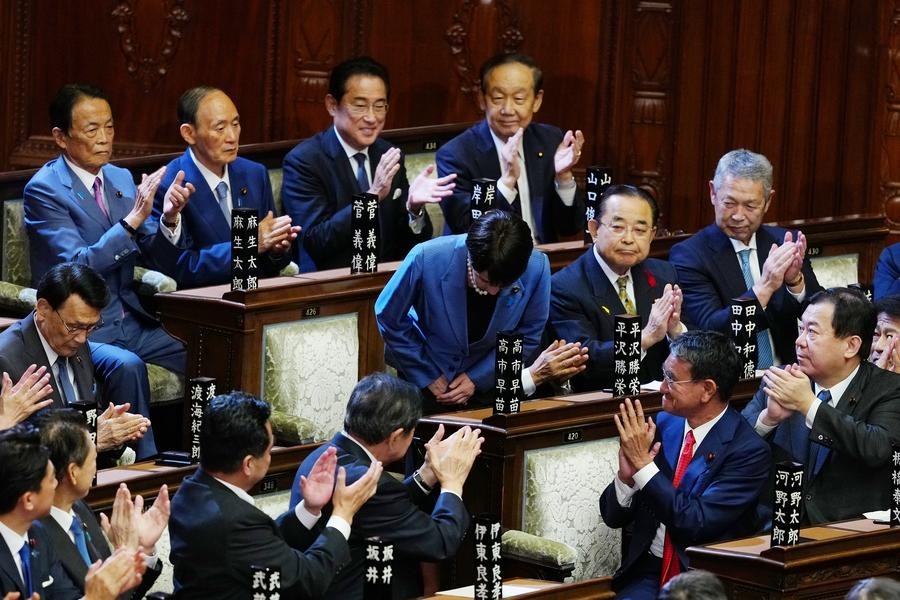New opportunity for green cooperation
China and the EU share willingness and complementarity in addressing climate change challenges


President Xi Jinping exchanged congratulatory messages with President of the European Council António Costa and President of the European Commission Ursula von der Leyen to mark the 50th anniversary of the establishment of diplomatic relations between China and the European Union on May 6.
In retrospect to the development of China-EU relations, EU leaders expressed their willingness to work with China to jointly address global challenges such as climate change. The China-EU green partnership exemplifies the institutional synergy between China's ecological civilization vision and the European Green Deal.
Since 2010, the High-Level Environment and Climate Dialogue between China and the EU has facilitated the exchange of green urban governance experiences. In 2020, the establishment of the China-EU Green Partnership officially incorporated green transition into the core of the comprehensive strategic partnership. Over the years, the EU has taken a lead in addressing climate change and promoting clean energy transitions, being the first economy to propose the 2050 climate neutrality target and the European Green Deal. It has established a comprehensive green policy framework encompassing legislation, regulation, incentives and market mechanisms.
China, on the other hand, has incorporated its "carbon peaking and carbon neutrality" goals into its Nationally Determined Contributions, by setting clear target timelines, launching a national carbon market and expanding its green and low-carbon policy toolkit. While each side pursues green development through its own institutional pathway, they share policy momentum and offer a mutually reinforcing institutional foundation for cooperation.
China and the EU have also developed a multitiered and full-spectrum framework for green cooperation. Mechanisms continue to function as key platforms for policy exchange in areas including emissions reduction pathways, carbon market rules, green taxation and standard-setting. Through policy communication platform building and technological alignment, China and the EU have effectively shared climate governance experiences and institutional resources, significantly enhancing the policy coordination underpinning their green partnership.
China and the EU have long maintained a high degree of complementarity within the green industrial system, a structural advantage that forms a solid foundation for bilateral cooperation. In the fields of clean energy and low-carbon technologies, China has built a highly integrated green manufacturing chain, achieving clustered strengths in photovoltaic, wind power, hydrogen energy, electric vehicles and their core components, as well as battery energy storage systems. It possesses large-scale production capacity, rapid cost reduction capabilities, and a globally integrated supply network. The EU, in turn, holds global leadership in green infrastructure, smart grids, energy-efficient buildings, high-end equipment manufacturing and the development of low-carbon technology standards. This complementarity serves as a key starting point for the deepening of cooperation.
In January, global temperatures hit a record high, highlighting the unprecedented climate crisis faced by countries worldwide in pursuit of the 1.5 C target. However, the absence of global climate leadership, particularly from the United States, poses significant challenges to international climate governance. The energy and socioeconomic crisis triggered by the Ukraine crisis has not only exacerbated the severity of the climate crisis but has also reinforced the critical importance of clean electricity for energy security and national security.
In response to challenges related to energy security, supply chain restructuring and external uncertainties, both sides have placed greater emphasis on establishing long-term, stable partnerships in green manufacturing. China's industrial advantages provide the EU with cost-effective and reliable support for its energy transition and technology deployment, while the EU contributes by advancing Chinese product quality, aligning standards and integrating high value-added technologies through its technical norms and regulatory expertise.
China-EU cooperation also helps mitigate Europe's energy security concerns. Following the outbreak of the Ukraine crisis, the EU has faced increasing pressure in restructuring its energy system. China's central position in global green value chains offers the EU access to vital products, technologies and capital. In photovoltaic, batteries and new-energy transportation projects, Chinese enterprises are increasingly participating in the construction of Europe's green industry ecosystem through joint ventures, equipment supply and the introduction of smart manufacturing practices. This embedded supply chain model not only improves the economic efficiency of industrial collaboration but also enhances the systemic resilience of both sides in the face of external shocks.
However, amid the growing trend of "over-securitization" in economic and trade policy, China and the EU face emerging frictions in multilateral cooperation and urgently need key opportunities to rebuild political mutual trust and strengthen alignment and cooperation in the fields of climate and energy. The US' systematic withdrawal from the Paris Agreement and other multilateral environmental mechanisms has increased the international community's expectations for China and the EU to uphold institutional stability and safeguard multilateral climate rules. At the end of 2025, COP30 will be held in Belém, Brazil, marking a pivotal moment for sustaining global climate ambition and advancing the implementation of the Paris Agreement.
China and the EU are the two largest renewable energy investors globally, and they are also the two largest trading partners in the world. As super-economies in clean energy, both parties should not only focus on their own industrial interests and international competitive advantages but also not ignore the fact that they are both facing the race to 1.5 C, a race where global climate leadership is key. Rather than adversaries in a zero-sum game, they should position themselves as mutual supporters in a win-win scenario and, most importantly, as allies in the global fight against the climate crisis.
This year marks the 10th anniversary of the Paris Agreement, which is a crucial year for assessing global climate action. For China and the EU, as key stakeholders in global climate governance, demonstrating ambition in renewable energy development within their NDC targets is essential to achieving the global goal of tripling renewable energy capacity. Looking ahead to COP30, China and the EU are expected to pursue institutional coordination along three key dimensions.
First, China and the EU should work together on power decarbonization to build energy systems that are clean, reliable and affordable for both. In the first half of 2024, the EU achieved a historic milestone, with renewable energy accounting for 50 percent of its electricity generation. China has already met its target of reaching 1,200 gigawatts of installed wind and solar capacity by 2030 — six years ahead of schedule. Notably, in 2024, 80.4 percent of China's newly added electricity generation came from renewable sources. This suggests that if China continues its rapid renewable energy expansion, the country's additional electricity demand in 2025 is highly likely to be fully met by renewables. Such progress would create an unprecedented opportunity for China's power sector to peak emissions by 2025. Meanwhile, China and the EU share similar challenges of how to phase out coal power without compromising energy security and how to make their power systems reliable, cleaner and smarter.
Second, China and the EU could further explore mechanisms for information exchange and methodological collaboration, laying the groundwork for potential third-party carbon credit transactions in the future, as China's national carbon market and the EU Emissions Trading System have shown initial comparability in terms of accounting methodologies, sectoral coverage and quota management.
Third, the two sides could expand green project cooperation to third-party markets. China and the EU have already initiated joint efforts in regions such as Africa, Southeast Asia and Latin America. By jointly developing project standards, financial regulations and environmental assessment systems, the two sides are gradually forming a synergistic model of international engagement.


Yu Hongyuan is a professor at the Shanghai Institutes for International Studies. He Jing is a climate and energy campaigner of Greenpeace East Asia. The authors contributed this article to China Watch, a think tank powered by China Daily.
The views don't necessarily reflect those of China Daily.
Contact the editor at editor@chinawatch.cn.


































